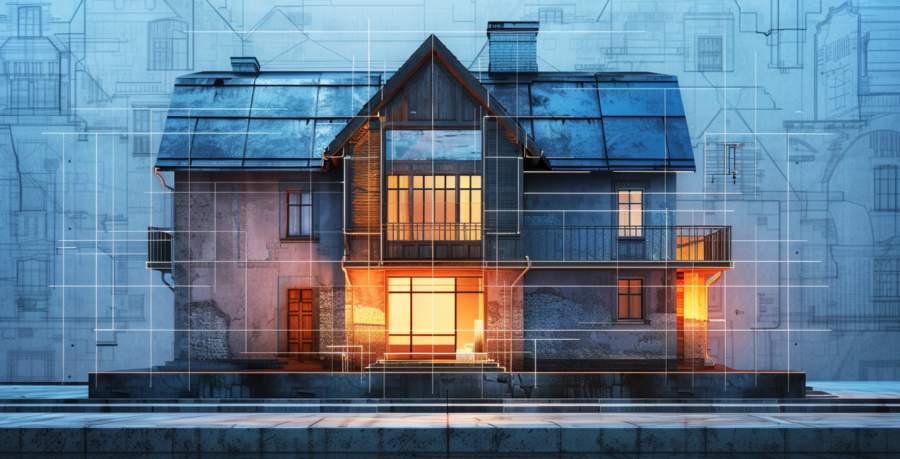What You’re Actually Dealing With
Older homes weren’t designed with insulation in mind. They were built to breathe, which sounds romantic until your heating bill arrives. Instead of sealed vapor barriers and tight envelopes, these houses relied on natural airflow to manage moisture. Shutting that airflow down without a plan can lead to condensation, mold, or walls that rot from the inside like a forgotten sandwich.And then there’s the woodwork, plaster, and trim—ornate, irreplaceable, and often positioned right where you’d love to start tearing into the walls. So the challenge becomes: how do you upgrade thermal performance without gutting the character?
Blown-In Cellulose vs. Spray Foam
If insulation were a boxing match, these two contenders would be fighting in different weight classes.Blown-in cellulose is made from recycled paper treated with fire retardant, which sounds suspicious until you realize it’s been used safely in homes for decades. It’s dense, affordable, and ideal for retrofitting walls with minimal damage. Installers can snake it into wall cavities by drilling small holes between studs—usually behind baseboards or exterior siding—without turning your house into a construction site.
It also has a forgiving nature. It doesn’t trap moisture in the same aggressive way that some foams can, making it a solid match for older structures that still need to “exhale” a little. Think of it as the insulation that whispers, not shouts.
Spray foam, on the other hand, is the overachiever. It seals gaps, adds structural rigidity, and delivers impressive R-values. But it comes with risks—especially in historic homes. Closed-cell spray foam is so good at sealing that it can choke off natural ventilation, leading to moisture buildup if not paired with deliberate air exchange strategies.
Open-cell foam is more breathable but less water-resistant. Either version can work, but only with precise planning and, ideally, someone on the job who doesn’t treat 19th-century lathe-and-plaster like drywall at a demolition derby.
Where to Insulate Without Angering the House
Strategic insulation starts with knowing where it will make the biggest impact—and cause the least disruption. Attics are usually the best place to start. They’re often unfinished, accessible, and responsible for a significant chunk of heat loss.Crawl spaces and basements are the next tier. Adding insulation and sealing air leaks here can dramatically improve comfort and efficiency. And since these areas are usually less adorned with decorative flourishes, you won’t lie awake worrying about the loss of original crown molding.
Preservation Without Paranoia
There’s a temptation to treat old houses like they’re held together with antique wishes and nails made of folklore. But most historic homes are sturdier than they look—as long as you respect what makes them unique. Preserving trim, woodwork, and original finishes doesn’t mean you’re stuck living with single-digit R-values.One tactic: avoid gutting plaster walls unless absolutely necessary. In many cases, dense-pack cellulose can be blown in from the exterior. This preserves your interior walls and lets you keep the beautifully uneven charm that only 120 years of settling can provide.
And when you must open things up—say, during a kitchen remodel or a plumbing upgrade—use it as an opportunity to insulate those exposed cavities before they disappear behind tile and cabinetry again. Think of it as sneaking vitamins into dessert.
Let the House Breathe (But Not Too Much)
Old houses were leaky by design. This passive ventilation helped control moisture before the invention of HVAC systems, but it also means your conditioned air is making a daily escape attempt. The goal isn’t to eliminate airflow entirely—just to direct and manage it.Proper air sealing should go hand-in-hand with insulation. That means caulking around window frames, sealing basement rim joists, and plugging up the random holes that seem to appear in older homes like plot holes in a bad sequel.
But don’t go overboard. A totally airtight envelope might sound ideal, but in a historic house, it’s a recipe for mold if you don’t pair it with mechanical ventilation. Think bathroom fans that vent outside, range hoods that do more than just hum, and in some cases, whole-house ventilation systems.
When You Need a Pro (and How to Spot a Good One)
Hiring a contractor for historic insulation work is not the same as patching drywall in a 2004 condo. You want someone who understands building science *and* knows what horsehair plaster is without having to Google it in your living room.Ask questions. Lots of them. Have they worked on historic properties before? What’s their plan to avoid damaging decorative features? Do they understand vapor drive? If they stare blankly at that last one, politely thank them and show them the door.
Look for professionals who propose reversible methods where possible. The best ones understand that their job isn’t just to make the house warm—it’s to do it in a way that doesn’t erase a century of craftsmanship.
Warmth Without Wreckage
Your historic home has made it this far without turning into a pile of damp rubble, so it deserves some respect when it comes to insulation. The right strategy won’t just cut your utility bills—it’ll also extend the life of the structure by helping it manage moisture and temperature more consistently.It’s not about stuffing every cavity with foam or replacing every window with double-glazed conformity. It’s about working with the house, not against it. A thoughtful blend of modern materials and old-school restraint will serve you—and the house—much better than an insulation job that treats history like a drafty inconvenience.
And hey, once you’re sealed up tight and cozy inside, you can finally sit back and enjoy the fact that you’ve managed to keep the stained glass *and* the heat. That’s what we call a draft-dodging win.
Article kindly provided by Insulation Commandos

